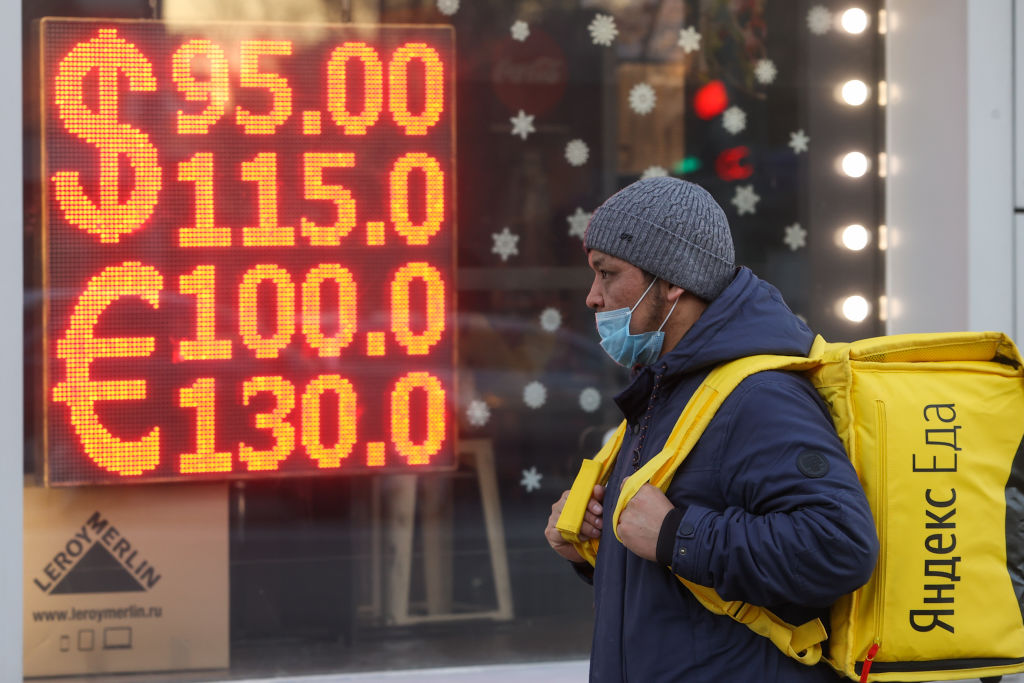Russia’s economic ministry said Wednesday that inflation in the country had jumped 14.5 per cent between March 12 and March 18.

Since the country invaded Ukraine, the cost of living in Russia has soared.
The Federal State Statistic Service released a report that assessed the consumer price index between March 12 and 18 and found that the price of common household items and foods had risen dramatically.
Sugar prices, for example, jumped an average of 13.8 per cent, but some regions have seen a price hike between 24 and 37 per cent.
Onions were the second-most affected item, rising an average 13.7 per cent. The highest inflation seen for onions in the country was 40.4 per cent. The price of tomatoes and bananas rose by around eight per cent. Cucumbers, however, saw a reduction in price of about six per cent.
Videos have surfaced on social media of Russians panic-buying goods.
“As in 2020, I want to reassure our citizens now: we fully provide ourselves with sugar and buckwheat. There is no need to panic and buy up these goods — there are enough of them for everyone,” said Viktoria Abramchenko, a Russian deputy prime minister, in a public address.

Get daily National news
One Russian citizen told The Guardian, “People are sharing tips about where to get sugar. This is crazy.” Viktor Nazarov is a resident of Saratov, where a local mayor announced it would hold a special market for people to buy sugar. Nazarov was instructed by his grandmother to stock up on the staple item.
“It’s sad and it’s funny. It feels like a month ago was fine and now we’re talking about the 1990s again, buying products because … we’re afraid they’ll disappear.”
Non-foodstuffs have also seen a rise in price. Sanitary pads were up five per cent and diapers rose by 4.4 per cent.
Domestic car prices rose 7.4 per cent but gasoline decreased ever so slightly, by 0.1 per cent.
In March 2021, prices of goods rose by about 0.021 per cent a day. In March 2022, that figure is 0.292 per cent — a leap of 27 per cent.
Russia’s economic crisis began after its invasion of Ukraine, as Western nations quickly handed down an unprecedented onslaught of sanctions. Russia’s currency, the rouble, dropped around 30 per cent against the American dollar after some Russian banks were barred from the SWIFT international payment system.
The rouble’s exchange rate stabilized after Russia’s central bank almost doubled its interest rate to 20 per cent, but the rouble is still down 22 per cent when compared to its price before the war in Ukraine.
After sanctions were announced, it was reported that Russians were flocking to banks and ATMs for days, with some bank machines running out of money. People outside the country with money in Russian banks also rushed to get their funds out.
With the rouble down, the cost of importing goods has risen sharply.
Stephen Innes, managing partner at SPI Asset Management, told the BBC that the culprit for rising prices is “importing inflation.”
“Anything Russia imports is exponentially (pricier) due to the weaker rouble,” he said.











Comments